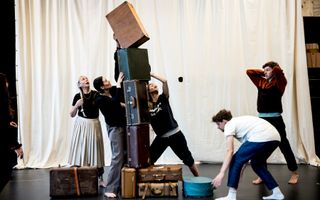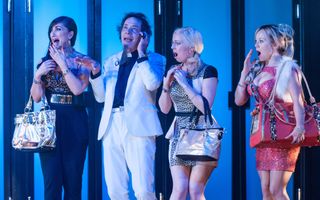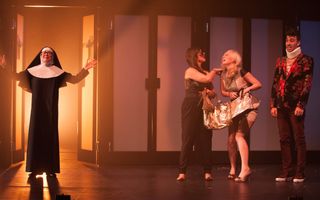 On Stage
On Stage
The Comedy of Errors is one of Shakespeare’s earliest works, written around the same time as Richard III and The Taming of the Shrew, and just before Romeo and Juliet.
The first known performance of the play was recorded to have taken place at Gray’s Inn in 1594. No print version of the play exists before the First Folio printing of 1623.
The Roman playwright Plautus and his play Menaechmi are the main sources of Shakespeare’s The Comedy of Errors. Although not translated into English until 1595, it is widely assumed that Shakespeare had read the play in its original Latin because the similarities between Shakespeare’s comedy and the Plautus’ text are striking.
The main focus in Plautus’ story is the experience of the native twin, whereas Shakespeare chooses to concentrate on the newcomer or outsider, in the character of Antipholus of Syracuse. There are several references to Ephesus, the setting for Shakespeare’s play, in the Bible. These include Acts 19:13–29, which refers to witchcraft and sorcery, and Ephesians 5:22–33, in which St. Paul discusses one of the play’s main themes, marriage. In true Shakespearean style, a second set of twins, the Dromios, are introduced into the play increasing the possibilities of mistaken identities within the town. The Dromio characters are taken from another play of Plautus, Amphitruo, a classical tragicomedy of love and deceit.
Perhaps Shakespeare’s most important dramatic addition to the story is the father of the Antipholus twins, Egeon. There are only two appearances of Egeon, first at the beginning of the play, then again at the end. This allows Shakespeare to bookend the play’s time period from sunrise to sunset. Furthermore, Shakespeare places Egeon and his story at the opening of the play to create a sense of urgency and foreboding. In doing this, Shakespeare sets up that Egeon will be killed at sundown if no one can pay his ransom. He also helps instil a sense of loss and grief into the story from the onset. Importantly, this takes place before any of the comic story and hijinks take place. The characters are in some kind of a state of struggle from the opening scene.
Regarding The Comedy of Errors, Anne Barton, in The Riverside Shakespeare, notes that “Shakespeare seems to be wedded to the idea that happy endings must, to carry conviction, be won from a serious confrontation with morality, violence, and time” (p. 113).







